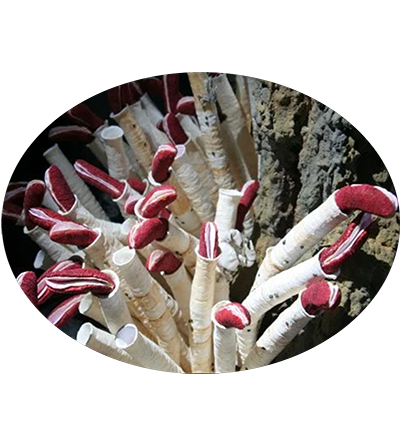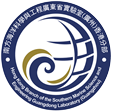
Riftia pachyptila, commonly known as the giant tube worm, is a marine invertebrate in the phylum Annelida. It inhabits hydrothermal vent ecosystems on the Pacific Ocean floor, where temperatures range from 2 to 30 °C. This species can tolerate extremely high hydrogen sulfide levels and relies entirely on symbiotic sulfur-oxidizing bacteria housed in its trophosome for nutrition. These worms can grow up to 3 meters in length, with tubular bodies reaching a diameter of 4 cm, making them one of the most iconic organisms in deep-sea vent ecosystems.
Animalia (Kingdom); Annelida (Phylum); Polychaeta (Class); Sedentaria (Subclass); Canalipalpata (Infraclass); Sabellida (Order); Siboglinidae (Family); Riftia (Genus); Riftia pachyptila (Species)
Riftia pachyptila Jones, 1981
1. Jones M L. Riftia pachyptila, new genus, new species, the vestimentiferan worm from the Galapagos Rift geothermal vents (Pogonophora)[J]. 1981. (Jones et al., 1981)
Galapagos Rift, Rose Garden geothermal vent 0.8042 (0° 48' 15" N) -86.2247 (86° 13' 29" W), 2,450 meters
| Species | Phylum | Common Name | Ecosystem | Depth | Habitat | NCBI Taxonomy ID |
|---|---|---|---|---|---|---|
| Riftia pachyptila | Annelida | Cold seep, Deep sea, Vent field | 2,514 | hydrothermal vent site Tica, East Pacific Rise (Alvin dive 4839, 9°50.398′N, 104°17.506′W) | 6426 |
| Genome Assembly | Genome Size | Assembly level | Released year | WGS accession | Submitter | BioProject | BUSCO completeness (%) | Scaffold/Contig N50 (kb) | GC content (%) | Repeat Rate (%) | Gene Number |
|---|---|---|---|---|---|---|---|---|---|---|---|
| - | 554Mb | Contig | 2023 | - | QUEEN MARY UNIVERSITY OF LONDON | PRJEB55047 | 99.37 | 2870 | 40.49 | 29.99 | 37,037 |
| Title | Journal | Pubmed ID |
|---|---|---|
| Distinct genomic routes underlie transitions to specialised symbiotic lifestyles in deep-sea annelid worms | nature communications | 37198188 |
| Gene ID | Description |
|---|---|
| RPACG07049.1 | - |
| RPACG07050.1 | MYOSIN |
| RPACG07051.1 | REPETIN |
| RPACG07052.1 | MYOSIN |
| RPACG07053.1 | SLIT RELATED LEUCINE-RICH REPEAT NEURONAL PROTEIN |
| RPACG07053.2 | - |
| RPACG07054.1 | PTERIN-4-ALPHA-CARBINOLAMINE DEHYDRATASE |
| RPACG07055.1 | UNCHARACTERIZED |
| RPACG07056.1 | - |
| RPACG07057.1 | - |
| RPACG07058.1 | - |
| RPACG07059.1 | - |
| RPACG07060.1 | LD27203P-RELATED |
| RPACG07061.1 | - |
| RPACG07062.1 | TRANSFERASE, PUTATIVE-RELATED |
| RPACG07063.1 | - |
| RPACG07064.1 | LIPOPOLYSACCHARIDE CHOLINEPHOSPHOTRANSFERASE LICD |
| RPACG07065.1 | ALPHA-(1,3)-FUCOSYLTRANSFERASE C-RELATED |
| RPACG07066.1 | - |
| RPACG07066.2 | - |

